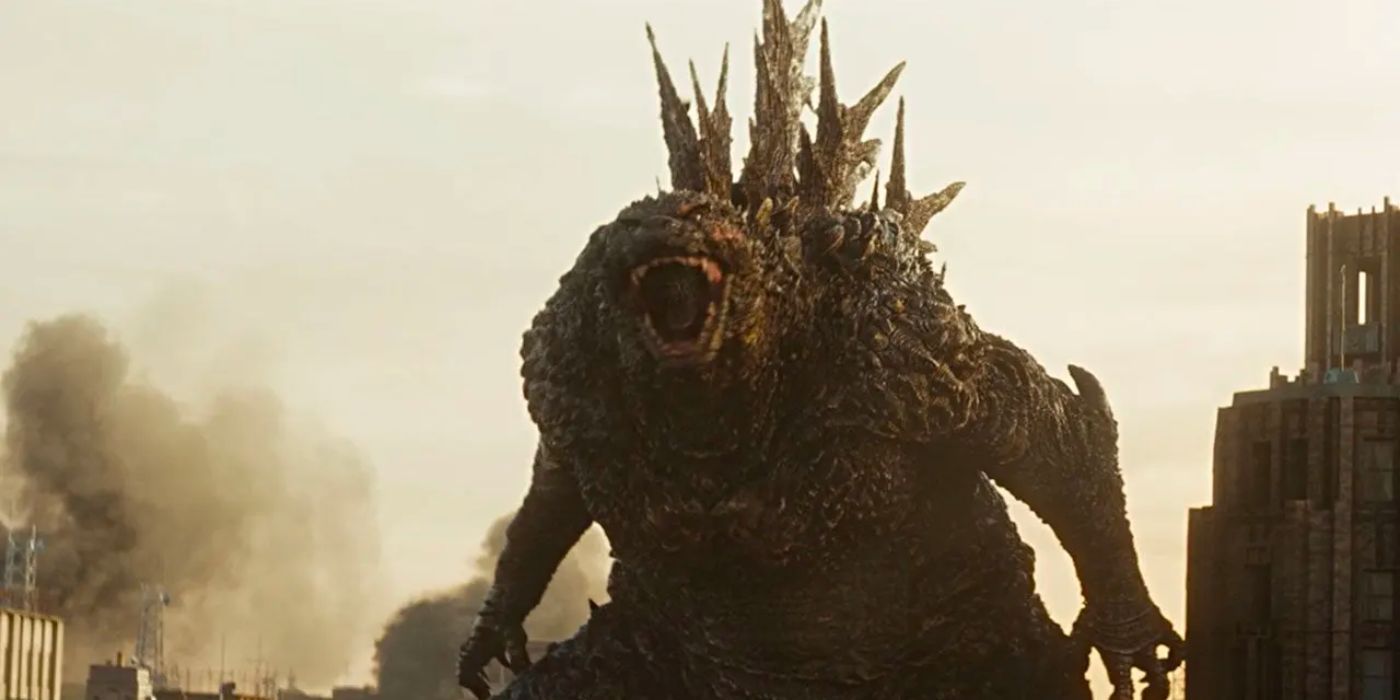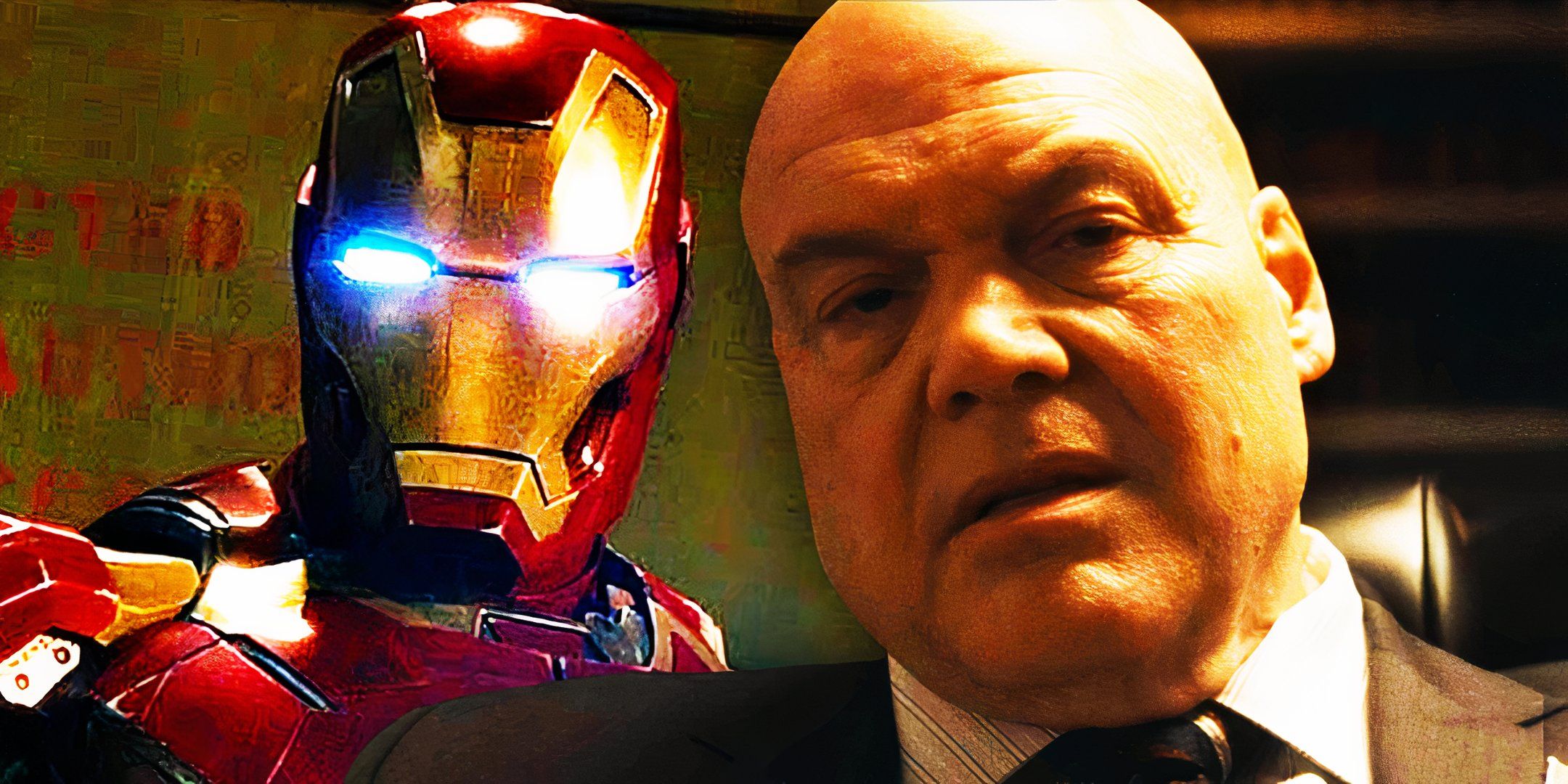All 9 Ways Minus One's Godzilla Is Different From All Other Versions
Summary Godzilla Minus One reimagines Godzilla with a rechargeable atomic breath, showcasing a more vulnerable and dynamic monster than previous versions.
The film introduces new elements like Godzilla's regenerative powers, altered dorsal fins, and a change in attitude towards humanity, creating a fresh take.
Godzilla Minus One explores a more aggressive and vengeful Godzilla, reshaping the iconic monster's origin story and abilities for a modern audience.
From cellular regeneration to atomic breath that causes nuclear explosions to a whole new origin story, Godzilla Minus One made a few key changes to the traditional Godzilla design and backstory. Taking the franchise back to post-war Japan, Takashi Yamazaki’s Godzilla Minus One revolves around Kōichi Shikishima, a kamikaze pilot with PTSD and survivor’s guilt. He teams up with another survivor to raise an orphaned child as a makeshift blended family. After missing his chance to kill Godzilla at a military base, Shikishima seeks redemption when the monster resurfaces and starts attacking cities.
The Godzilla seen in Godzilla Minus One has all the hallmarks of the beloved kaiju: super strength, super durability, atomic breath, a towering, skyscraper-sized physique. But Yamazaki also made a few changes to the character’s traditional design. The way Godzilla’s atomic breath works has been changed; the size and purpose of his dorsal fins have been changed; and the sound of his roar has been slightly altered from the 1954 original. Godzilla Minus One’s Godzilla has new powers, a new backstory, and a new contempt for humanity.
9 Godzilla's Atomic Breath Needs To Be Recharged
In previous incarnations of Godzilla, there’s no limit to the monster’s atomic breath. He can shoot atomic blasts out of his mouth whenever he feels like it. He can breathe atomic energy for as long or as short as he wants. But in Godzilla Minus One, his atomic breath needs to be recharged. While he’s blasting atomic energy out of his mouth, he has a finite amount of charge before it runs out. Then, he needs to recharge his atomic breath before he can use it again.
This gives Godzilla a weakness that makes him a more dramatically interesting character. The previous versions that didn’t have to recharge their atomic breath are ridiculously overpowered. The human characters never stood a chance against him in those movies. But having to recharge his atomic breath gives these human characters a chance to fight back against Godzilla. In Godzilla Minus One, it gives the military a few seconds to get their own shots in.
8 Godzilla's Dorsal Fins Shoot Out Of His Tail When He Charges Up
Not only does Godzilla’s atomic breath need to be recharged in Godzilla Minus One; his dorsal fins show a visual representation of that charging. When he charges up, his dorsal fins shoot out of his tail to show him quickly gaining power. This is an exciting visual and one of many ingenious touches that earned Godzilla Minus One’s VFX team a much-deserved Oscar.
Godzilla’s dorsal fins are one of the areas that are open to interpretation when it’s time to redesign the monster for a new movie. Whereas his scales and his disproportionate head usually stay the same, his dorsal fins are free to be reimagined whenever a new Godzilla design is on the table. Godzilla Minus One’s dorsal fins are bigger and sharper than usual, which makes Godzilla an even more terrifying and intimidating figure.
7 Godzilla Has Cellular Regenerative Powers
Regeneration is nothing new in the Godzilla canon – several incarnations of Godzilla have been able to regenerate their damaged body parts – but Godzilla Minus One’s regenerative powers go a step further. Godzilla Minus One’s Godzilla has an advanced healing factor. He’s even able to regenerate his entire body if nothing more than a single piece of him remains. This cellular regeneration provides Godzilla Minus One with its cliffhanger ending, which suggests that the monster might not be dead after all.
After a mine in his mouth blows off a chunk of his face, Godzilla Minus One’s Godzilla regenerates the missing part of his face – including his lost eye – in a matter of moments. Godzilla’s cellular regeneration powers do have some limits. For example, his internal injuries heal at a much slower rate than his external injuries. According to Godzilla Minus One’s novelization, Godzilla’s regenerative powers existed before his mutation, not just after it.
6 Godzilla Originated As A Primitive Organism
While Godzilla’s backstory in Godzilla Minus One is vaguely similar to his origins in other incarnations, the movie makes some key changes to his backstory. In the original 1954 film and most of its successors, Godzilla is a dinosaur-like creature who was mutated and transformed into a giant monster by nuclear tests in the ocean. But Godzilla Minus One suggests that Godzilla might be a lot older than that, and that he might’ve even been around since ancient times.
The cellular regenerative abilities that Godzilla has in Godzilla Minus One may have allowed him to survive from ancient times. Whatever nature threw at him throughout that time, he was able to weather the impact by regenerating his damaged areas. However, the nuclear testing aspect of Godzilla’s backstory is still present in Godzilla Minus One; the Operation Crossroads nuclear tests exacerbated his mutation.
5 Godzilla Can Contaminate Entire Areas With Radiation Poisoning
In addition to all his usual powers – strength, endurance, atomic breath, etc. – the Godzilla of Godzilla Minus One has a new power: contamination. He gives off a particular type of radiation that can contaminate an entire area. Any human who’s unlucky enough to get caught in a contaminated area can develop a strain of unknown radiation poisoning. The contaminated humans develop blackened markings on their skin that resemble Godzilla’s dorsal plates.
After Godzilla destroys Ginza in one of Godzilla Minus One’s most thrilling action sequences, the authorities quarantine the entire area due to the rampant levels of radioactive contamination that the beast left behind. Part of the reason for this quarantine is so that the authorities can collect pieces of Godzilla’s flesh, which are composed of an unknown nuclear material. But the main reason is to prevent further contamination.
4 Godzilla's Atomic Breath Functions Like A Nuclear Bomb
Previous incarnations of Godzilla have treated his atomic breath as an energy blast, but Godzilla Minus One depicts his atomic breath more like a nuclear bomb. In the fallout of Godzilla’s atomic breath, a mushroom cloud remains – just like when a nuclear bomb is detonated. And not only is Godzilla’s atomic breath powerful enough to cause a nuclear explosion; it can even burn Godzilla himself, forcing him to regenerate his cells before he can use it again.
The novelization of Godzilla Minus One even goes as far as describing the heat of Godzilla’s atomic breath as strong enough to sublimate iron. This is demonstrated when very little of Takao and the National Diet Building remain after they’ve faced the full force of Godzilla’s atomic breath. The book also confirms that Godzilla’s atomic breath has a shockwave capable of destroying everything within a six-kilometer radius.
3 Godzilla Has A Different-Sounding Roar Before His Mutation
Godzilla’s roar is one of the most iconic aspects of his character, but Godzilla Minus One makes a couple of subtle tweaks to that iconic roar. By the end of the movie, in his post-mutation form, Godzilla Minus One’s Godzilla has the same roar as the Godzilla of the original 1954 movie. However, this roar is amplified with a much rougher, angrier tone, and it has an echo effect that adds an eerie element to the sound.
But in his pre-mutated form at the beginning of the movie, Godzilla Minus One’s Godzilla has a totally different roar. Instead of roaring, he makes loud, piercing shrieks and low-pitched bellowing sounds. The only time he sounds like 1954 Godzilla is when he’s provoked and lets out a brief pre-mutation roar. Godzilla Minus One completely rewrites the traditional Godzilla sound design.
2 Godzilla Is Vulnerable To Underwater Pressure
Traditionally, Godzilla is depicted as a mysterious sea monster, and like most mythical sea monsters, he’s one with the ocean. But in Godzilla Minus One, Godzilla is vulnerable to the same dangers of the sea as humans. In the film’s third act, the civilian fleet that takes up arms against Godzilla comes up with the novel idea to drag Godzilla to the bottom of the ocean, then push him back to the surface, with the intention of using underwater pressure against him.
Previous Godzillas might have been impervious to underwater pressure, but Godzilla Minus One’s Godzilla isn’t so lucky. After being dragged to the bottom of the ocean and then quickly pushed back up at a depth of 1,500 meters, Godzilla’s body starts to fail. He bloats up, his skin tears and exposes his flesh, and his atomic breath starts to overcharge itself, putting Godzilla’s life in jeopardy.
1 Godzilla Is More Hostile Towards Humanity
In most incarnations, Godzilla is a destructive force of nature who’s indifferent to human presence. He knocks over skyscrapers and wipes out humans in his path, but it’s not because he has any particular animosity towards the human race. Godzilla Minus One changed that and made Godzilla more openly hostile towards humanity. When he charges through the city, he’s not just killing the people who get in his way; he’s actively trying to kill as many people as he can.
Godzilla Minus One doesn’t overtly explain why this version of Godzilla is so furious at humanity, but it is hinted at. This version of Godzilla is shown to have a more vengeful personality. In his first appearance, he takes the time to survey the military base instead of just going guns blazing. But later in the film, Godzilla resents the human race for dropping nuclear bombs in the ocean and disturbing his peaceful undersea existence with an unexpected mutation, so he has a change of heart and suddenly wants to kill as many humans as possible.











COMMENTS